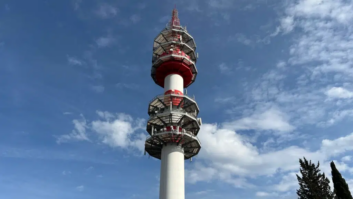The author is chief technology officer of Nautel. This article appeared in the ebook “STLs in the 21st Century.”
You may ask, why would Nautel, a world-leading manufacturer in AM/FM broadcast transmitters, be interested in the topic of studio-to-transmitter links?
The easy answer is that the “to-transmitter” portion of the STL very much impacts transmitter exciter design, where Nautel provides a unique viewpoint and expertise.
Typically, AM/FM broadcast transmitters provide a standard set of audio and modulation inputs from analog audio, digital AES, composite MPX and RDS inputs. HD Radio was the first system that broke these established norms, when the exporter, an audio encoder and multiplexer, and the exgine IBOC modulator were introduced in third-generation architecture.
While FM audio was still delivered to the exciter using traditional means, now the transmitter exciter required an Ethernet port for the exgine to communicate with an exporter possibly located at a studio or other remote location. To address STL challenges between exgine and exporter for HD Radio, Nautel developed a Reliable HD Transport protocol, addressing packet loss across STLs through a retransmission scheme while ensuring a constant-bitrate IP stream.
The system was successfully applied to HD Radio delivery over satellite, and we extended the protocol to allow for single-frequency network (SFN) synchronization of the HD Radio signal.
The new HD Radio architecture foreshadowed the emergence of IP connectivity for all exciter modulation, including analog FM content enabling 100% content delivery over IP.
When Digidia joined the Nautel family in 2021, we gained a talented development team with IP STL and FM exciter experience behind the SpanFM and SyncFM product line, targeting analog SFN applications like a highway SFN in France spanning hundreds of FM transmitters.
The Digidia team applied the IP content delivery framework and protocols found within the DAB+ standard to analog FM transmission, allowing for uncompressed composite MPX end-to-end transmission, as well as MPEG2 compression for bandwidth-constrained applications like satellite.
We realized that all common digital radio standards in use today — HD Radio, DAB+ and DRM — share a common protocol framework for content delivery from encoder to modulator: the Distribution and Communications Protocol (DCP) standardized in ETSI TS 102 821.

Combining this realization with the Digidia work of bringing composite MPX into the DCP framework, we propose a common framework for both analog and digital radio including HD Radio, enabling 100% IP content delivery for both analog FM-only and hybrid FM/HD Radio stations. The stereo generator creating the composite MPX signal assumes a parallel role to the HD Radio exporter that encodes the HD audio; both operate on the same L/R audio input. We are working with standardization bodies like the National Radio Systems Committee and Institute of Electrical and Electronics Engineers to open our solution for wider application.
In the future this will eliminate intermediate IP audio codecs and allow audio processors and encoders to deliver all modulation content to the broadcast transmitter, just as it has within the DAB framework, where vendor interoperability has been achieved across many encoders, multiplexers and modulators even for large-scale SFN deployments.
By synchronously linking the FM MPX and HD Radio content within the DCP framework, Nautel demonstrated at last year’s NAB Show that HD Radio diversity delay alignment can be maintained across time, system restarts or other link interruptions, no matter where the air chain ingest is located: at the studio, at the transmitter site or even in the cloud. No GPS required.
Furthermore, by aligning HD Radio modulation frames stemming from different air chain audio encoders, we can gracefully change the modulator over from one air chain to another with minimal interruption on an HD Radio receiver. Changing from the main air chain to the backup air chain maintains modulation lock in an HD Radio receiver resulting in an HD drop of only 2–3 seconds, and no downtime on the analog FM.
In the future, the only physical equipment in a typical radio station deployment could be the microphone and the broadcast transmitter. With a synchronous framework for content delivery that includes all modulation content for FM and all HD Radio channels, we can virtualize all other air chain components from playout to audio processing as software-only components that can live anywhere, even in the transmitter itself.












